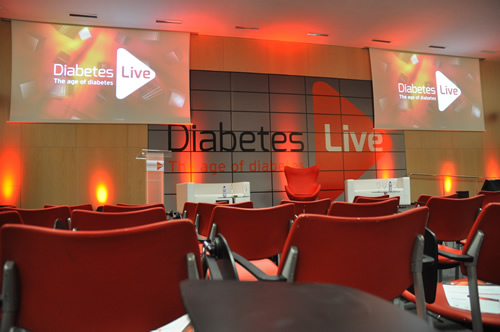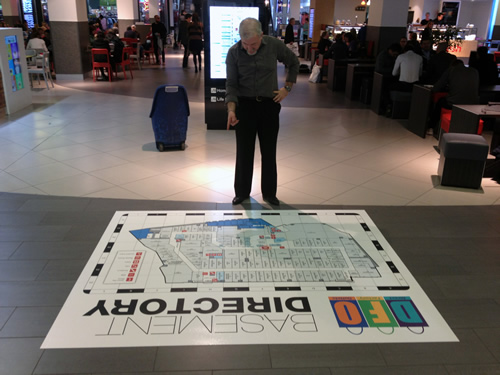It has been said that with inkjet, any surface is a possible medium. So how’s that impacting substrate development? John Taylor asks ‘where now?’It has been said that with inkjet, any surface is a possible medium. So how’s that impacting substrate development? John Taylor asks ‘where now?’
What problems do you as a PSP have in terms of getting the right substrates for the right job? What niggles do you have with your substrate suppliers? These were questions put to print companies prior to research for this article. The upshot? Not a lot. It seems the printable substrates market deserves applause. Things like getting hold of the right roll lengths, widths, sheet sizes, thicknesses et al seem no longer be significant problems. And in terms of actual substrate offering, partnership and dialogue between printers and suppliers is certainly paying off.
From the small, large-format PSP perspective, a wide choice of materials options and a fast supply are now in place. Ramsgate based Eyeball Designs feeds its Roland with Metamark substrates. “We have no issues at all,” says owner Ian Webster. “We get what we need and if there is a problem, it’s minor and dealt with fast. We could buy cheaper, or indeed more expensively, but we get the service so we stick, taking no risks.” And issues experienced: the odd creasing on the core at the end of a roll.
Talk to a bigger user and the response is much the same, but with consistency creeping in as an occasional issue. Venture Banners outputs more than the average printer at 15,000m2/month. According to MD Scott Conway, consistency is the firm’s only real substrate problem. He airs the issue of 500µm pop-up media turning up with a grey colouring and the next batch with a creamier colour. And of course for colour matching that becomes a problem.
Using loads of one particular media, the company was admittedly rocked when an alternative media from the supplier had to be used. Tensioning the media was not the same: the result on printing – floppy edges on the banners when printed, scuffs and even head strikes during print. The job had to run through the night taking six roll changes to get the job done instead of the usual two with the more familiar media.
Media consistency is key of course, and other issues do and will occur, but the solution is two-way dialogue and close working with the substrate supplier. And most reputable suppliers do exactly that.
Europoint managing director Frank Moran reinforces the point, stressing the importance of joined-up thinking throughout the whole process, from media and machine compatibility, the people involved, profiling, testing etc. “Everyone needs to ensure that everyone gets what they want,” he says. And pointedly adds: “There should be no cutting corners by the customer whose onus it is to buy the right materials for the job.”
More added value…
The dialogue between all involved parties means print media development continues apace and has become vital in terms of PSPs being to offer something that enables them to produce a value-added product for customers. Thus substrates are constantly coming to market that extend a PSP’s applications possibilities.
Soyang is one of a number of companies that looks beyond providing substrates for run of the mill, or commodity jobs. Rather it focuses on selling media for more novel, niche applications. Its range includes G-Floor, SoNetic, AlumiGraphics and SoFlat.
G-Floor is a printed sub-surface flooring media for LED UV roll-fed printers. This creative, and practical, flooring option boasts print protection and is therefore durable. Benefits include fast installation, particularly useful in situations. It’s low noise, high wear and hygienic. It won’t curl, and it puts branding in an underutilised space – beneath your feet where it cannot be missed. Soyang, the exclusive European distributor for the US manufactured G-Floor, says it especially comes into its own when used with white capability UV printers.
SoNetic is a wide-format printable magnetic media ideal for retail, events, hospitality and education. Just apply a magnetic base material to a wall or required surface and the printable face ferrous element film simply ‘sticks’ to it. It is easily hung in drops that are repositionable and replaceable to suit changing requirements in seasonal displays or branding, themes, for example.
Soyang has also sourced from the US the fully recyclable, aluminium foil based AlumiGraphics for outdoor and indoor applications. Tiles, brick, asphalt and stone are easy surfaces to apply the printed product to. It’s also quick to remove. Printing is by solvent or UV machines and with anti-slip or smooth finish options, it provides a means of wayfinding or signage on surfaces that are normally difficult to apply graphics to.
Niche ES films…
Niche electrostatic films for digital print is stock in trade of Think Ambient, a forward thinker that set up some ten years ago specifically to distribute ClingZ statically charged film, initially for offset then smaller format digital. Now wide-format comes into the equation with options in 420, 720 and 1,372mm widths. Notably, the material is readily tileable in applications too.
This polypropylene media boasts environmentally friendliness, recyclability and non-toxicity compared to static vinyls made from PVC that only stick to glass and glossy surfaces.
For Diabetes Live in Barcelona, Think Ambient’s client needed to take a backdrop in a tube in hand luggage. At the event, the ‘prints’ were quickly tiled to shape up as stunning TV screens. And in another application, Smiths of Smithfield used Clear ClingZ and printed the 1m wide designs white using 1,372mm rolls.
Think Ambient followed up with its longer lasting Skinz, delivering higher adhesion and robustness. Skinz comes in white, opaque white and ultra-clear versions that use either micro-suction or silicone to stick to smooth, shiny surfaces. Skinz can also be used in areas exposed to moisture, giving a perfect finish without any air bubbles spoiling the look of the display. Similar to ClingZ, Skinz is also easily removable, repositionable and damage-free.
Moving the product range forward and following customer demand for a double-sided printable film, Vibo joins the portfolio. It features a limited growth adhesive that leaves no residue when removed, a marked improvement on alternatives on the market says the company. Vibo is fairly rigid with a dead opaque barrier between the front and the back. Place it in a window and the message is clear on both sides, without show-through.
Static obviated…
Static, the bane of digital print, is something Perspex Distribution says it has got round with its Palfoam AS Digital, now in 3050 x 2030mm sheets and 3, 5 and 10mm thicknesses.
Product Manager Mike Summers says the lightweight PVC foam board with bright white base, is totally anti-static. Bright green, easy peel film provides pre-print surface protection and notably when printed, the material stays cleaner longer, says Summers.
He also highlights another development from Perspex Distribution – the Alupanel A-Lite Digital aluminium composite which uses a new A5005 alloy for the 0.2mm skin and an ink receptive coating both sides.
A5005 is softer aluminium enabling cleaner cutting. Rigidity is added to the composite through a harder LDPE core. The composite also features a fast removal, easy peel protection film both sides: it will not tear on removal.
The above is just an indication of the activity taking place in substrates R&D. Increasingly media suppliers are aware that, having got the basics right - mostly - the greatest opportunity now lies in being able to deliver something a little bit different. Continual conversation between you and your suppliers will ensure that continues.

{jathumbnail off}


